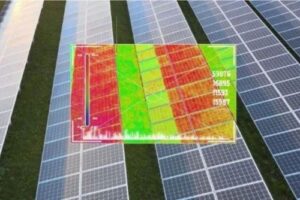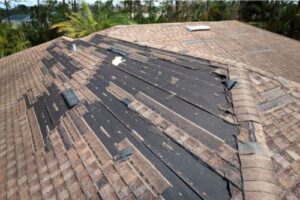Introduction
Cell towers are the backbone of modern communication. With the rise of 4G, 5G, and expanding internet coverage, telecom companies depend on thousands of towers worldwide to keep people connected. But inspecting these tall structures is not an easy task. Traditionally, maintenance teams had to climb hundreds of feet with safety gear to check antennas, cables, and other components. This process is not only time-consuming but also highly risky.
This is where drone-based cell tower inspections are transforming the telecom industry. By using unmanned aerial vehicles (UAVs) equipped with high-resolution cameras and sensors, companies can now perform inspections faster, safer, and with greater accuracy.
In this blog, we will explore what drone cell tower inspections are, how they work, their benefits, challenges, and why they are becoming the standard for telecom maintenance.
What is Drone Cell Tower Inspection?
Drone cell tower inspection is the process of using drones fitted with high-resolution cameras, LiDAR, and thermal sensors to capture detailed images and videos of telecom towers. Instead of sending human workers to climb the structure, drones can fly around the tower and collect data from multiple angles.
The data collected provides engineers with a clear understanding of the tower’s condition, identifying issues such as:
-
Rust or corrosion on the structure
-
Loose or damaged cables
-
Misaligned antennas
-
Cracks or physical damage
-
Overheating components
By replacing manual climbs with drones, companies reduce risk and gain more reliable information.
How Does Drone-Based Cell Tower Inspection Work?
1. Pre-Flight Planning
Engineers plan the inspection by programming the drone’s flight path around the tower. GPS mapping ensures complete coverage.
2. Aerial Data Collection
The drone flies around the tower, capturing 4K images, 360° videos, and thermal scans.
3. Data Analysis
The collected data is uploaded to AI-based platforms where issues are automatically flagged, such as loose bolts, damaged antennas, or overheating.
4. Reporting
A detailed inspection report is generated with annotated images and GPS coordinates, helping technicians address the exact problem quickly.
Benefits of Drone Cell Tower Inspections
a) Enhanced Safety
Traditional inspections required technicians to climb towers, sometimes up to 300 feet high. Drones eliminate this dangerous task, keeping workers safe.
b) Faster Inspections
Manual inspections could take hours or even days for multiple towers. With drones, a single tower can be inspected in under an hour.
c) Cost Savings
Drone inspections cut down on labor, equipment, and downtime costs. Over time, this saves telecom companies millions of dollars.
d) High-Quality Data
Drones capture high-resolution photos, thermal images, and even 3D models, offering more detailed insights than manual inspections.
e) Reduced Downtime
Since drones are quick, telecom services remain uninterrupted during inspections, unlike traditional methods that often require partial shutdowns.
f) Access to Hard-to-Reach Areas
Drones can easily capture images of hidden or complex parts of a tower that are difficult for humans to access.
Technology Used in Drone Inspections
-
RGB Cameras: Provide high-resolution visual images.
-
Thermal Imaging Sensors: Detect overheating equipment and electrical issues.
-
LiDAR Scanners: Generate 3D models of the tower structure.
-
AI Software: Analyzes data to identify faults automatically.
-
GPS Systems: Ensure accurate flight paths and precise data collection.
Common Issues Detected with Drone Inspections
-
Corrosion and Rust on the metal frame
-
Loose or Damaged Cables impacting signal strength
-
Cracked Insulators or Connectors
-
Misaligned Antennas affecting network coverage
-
Bird Nests or Debris interfering with equipment
-
Overheating Components identified through thermal scans
Challenges in Drone Cell Tower Inspections
While drones bring significant benefits, there are challenges to consider:
-
Weather Dependency: Strong winds or storms can delay inspections.
-
Regulatory Restrictions: Some regions require special drone permits for commercial use.
-
Initial Investment: High-quality drones with LiDAR and thermal sensors are costly.
-
Data Management: Inspections generate large amounts of data that need efficient processing.
-
Skilled Operators Needed: Trained pilots are required for safe and compliant drone operations.
Case Study Example
A telecom company with 2,000 towers in its network traditionally spent weeks inspecting each site manually. After adopting drone inspections, they reduced inspection time by 70% and cut maintenance costs by 40%. Reports were more accurate, and worker safety incidents dropped to zero.
Future of Drone Cell Tower Inspections
The future of drone-based inspections looks highly promising with advancements in:
-
AI and Machine Learning – Automated defect detection without human analysis.
-
Autonomous Drones – Self-flying drones that require no pilots.
-
5G Integration – Real-time video streaming from drones for live inspections.
-
Digital Twins – Creating virtual 3D models of towers for predictive maintenance.
Conclusion
Drone-based cell tower inspections are revolutionizing the telecom industry by making inspections safer, faster, and more accurate. They eliminate the risks of manual climbs, reduce costs, and provide data-driven insights that improve decision-making.
As telecom networks expand and demand for uninterrupted connectivity grows, drones will play a crucial role in maintaining infrastructure. For telecom companies, investing in drone technology is not just a smart choice—it’s the future of efficient and safe tower management.



